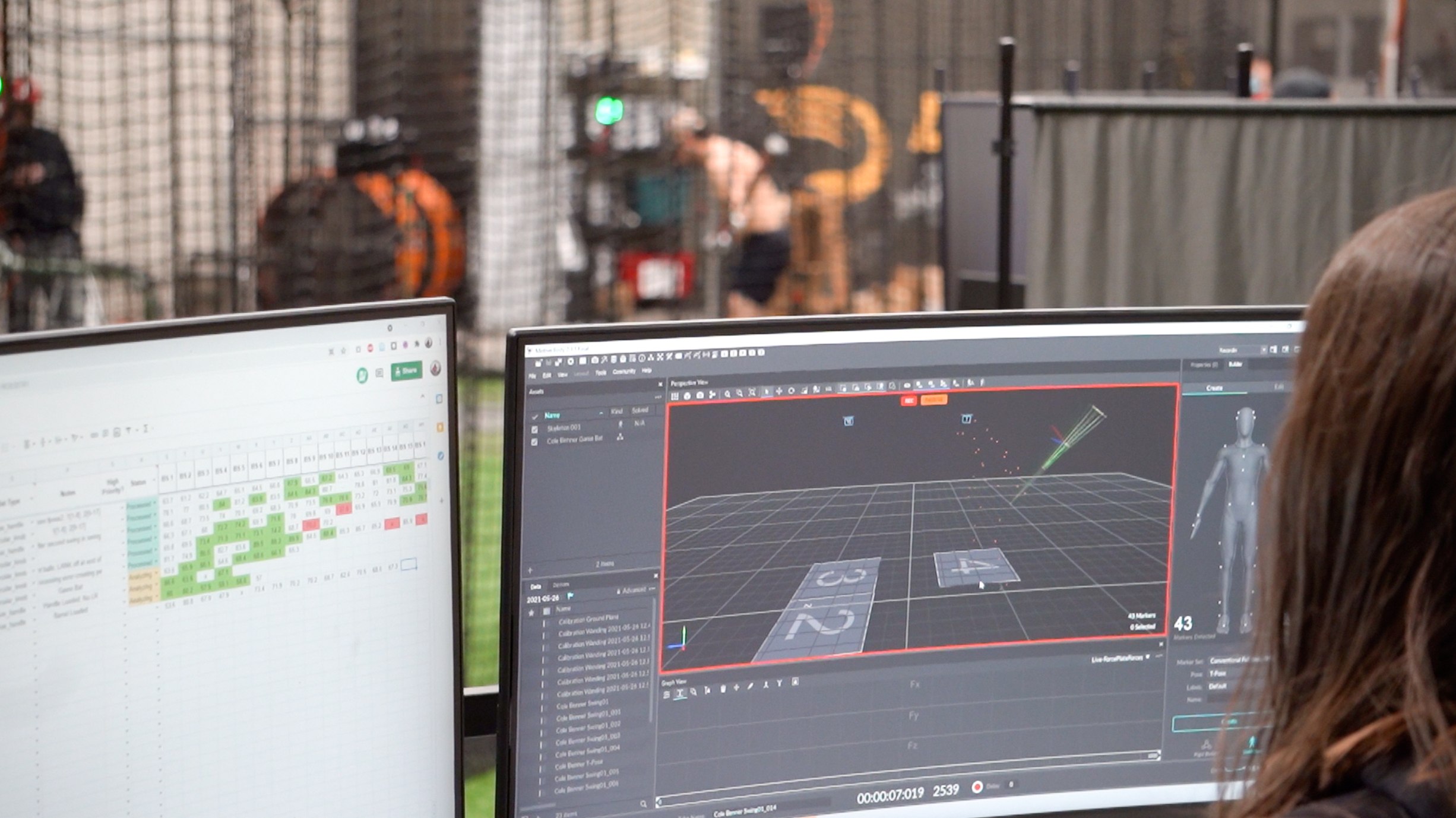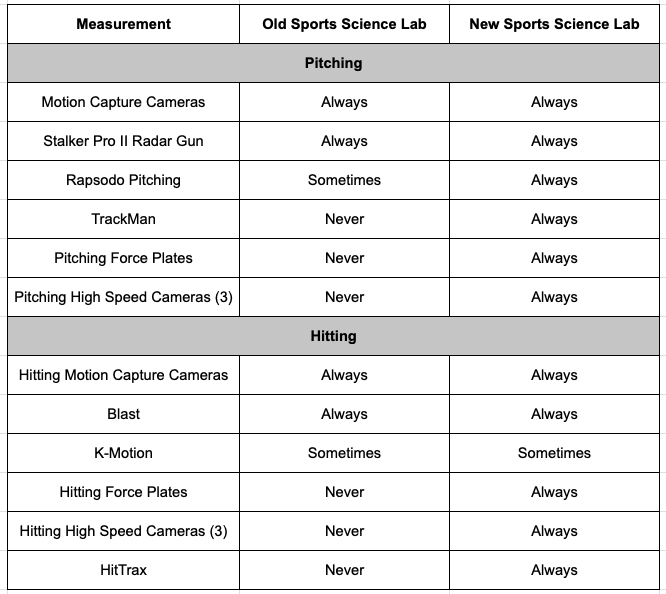Not just a pitching lab: The brand-new Driveline Sports Science Laboratory

Over the last few months, we have been putting the finishing touches on a lab you might expect to see from the future—the biggest and baddest sport science lab in the industry.
The 5,000 square foot area will feature tens of new and upgraded motion capture cameras, high speed video, force measurements—you name it. More tech and more data will lead to more insights, in turn producing better athlete results.
In with the new
Prior to the latest additions, the Driveline Sports Science Lab featured:
- A 17-camera 3D-motion capture system set up around a portable pitching mound
- Stalker Pro II radar gun
- Intermittent use of ball flight tracking
We’ve been using this to steadily build a massive database of pitching and hitting biomechanics—and now we’re adding force plates and other tech to it!
Here is a look our recent additions:

These additions allow for a more dynamic space where we can collect solely pitching biomechanics, solely hitting biomechanics, and even biomechanics from pitchers and hitters in live competition. This is all on top of the ever-progressing performance tracking (away from the lab) that we use in the training environment to steer training programs and improve athlete development.
Because of these additions and the ridiculous amount of data we will be able to collect in one area, the Driveline Sports Science Lab will be the new home of Driveline’s infamous live at-bats.
Changes to Live ABs
Live at-bats at Driveline have a special legacy—and they just got a lot better. Having multiple measurements for athlete assessments is obviously valuable for helping our coaches train athletes, but the more exciting part of having the world’s best sports science lab is that we can collect all of this data during live at-bats. Now, instead of bringing all the energy and some of the data, we can bring all the energy and all the data.
Most high-precision biomechanics research happens in very controlled settings. Those controlled research settings represent a very different environment than what an actual game is like. Our new setup is extremely exciting for the same reasons it’s exciting to see Hawkeye being used in professional baseball stadiums—biomechanics research in the competitive environment is now possible, which creates the opportunity to generate a completely new dimension of insights.
How do biomechanics change throughout an at-bat? How do hitters adjust their load and stride against different types of pitchers? Can we figure out how to create more deception as a pitcher or how to combat it as a hitter using high speed video?
We don’t know—but we are now a few steps closer to finding out.
We have all these cool things—what are we going to use them for?
With more athletes and more employees in the facility during the summer, there’s an opportunity to do some very interesting and important research. Outside of live at-bats and athlete assessments, here is a list of some studies we hope to collect data for this summer in the lab:
The effect of throw intensity on overhead throwing mechanics
Questions to answer:
- How do mechanics compare between different levels of intent?
- How accurately do athletes’ perceived intensities match up to their actual output?
- How do throwing mechanics compare between regular throws and crow hops at similar intents?
Measurements:
- 3D motion capture for pitching biomechanics
- Force plate measurements for pitching-related ground reaction forces
- Pitch velocity
Relationship between jumping performance and baseball-specific performance
Questions to answer:
- Can jump assessments with force plates predict pitching and hitting performance?
- What insights can we gain from jump assessments to individualize training programs for athletes?
Measurements:
- Force plate jump assessments
- Counter-Movement Jump
- Squat Jump
- Lateral Bound
- Broad Jump
- 3D Motion capture for pitching and hitting biomechanics
- Pitch velocity, bat speed, and other performance measures
Swing differences hitting various pitch types
Questions to answer:
- How does pitch type affect swing characteristics for hitters?
- How do hitters’ swings change when they don’t know what pitch type is coming compared to when they do?
Measurements:
- K-Motion K-Vest for swing biomechanics
- Blast Motion bat sensor for swing path and bat speed
- HitTrax for live batted ball metrics: exit velocity, point of contact, and launch angle
How does vision/gaze behavior change in different settings?
Questions to answer:
- How does a hitter’s gaze behavior change when facing a righty or lefty pitcher?
- Does a hitter’s gaze behavior change when they don’t know what pitch is coming vs. when they do?
- How does a hitter’s gaze behavior change as they face the same pitcher multiple times?
Measurements:
- Gaze/vision tracking
- HitTrax for batted ball and point of contact data
- Outcome data from live at bats
“But fancy toys don’t make you a great coach..”
That’s absolutely right. What all of this technology does is deliver an objective measure of your movement and performance to aid our coaches in determining what you need the most. It also allows us to continue analyzing all of this data to learn what things are best at helping athletes improve.
So come to improve, or don’t. Either way, we will be here, continuing to push the boundaries of baseball player development and learning how to build baseball’s future monsters.
Train at Driveline
Interested in training with us? Both in-gym and remote options are available!
- Athlete Questionnaire: Fill out with this link
- Email: [email protected]
- Phone: 425-523-4030
Comment section